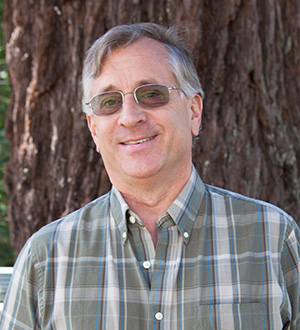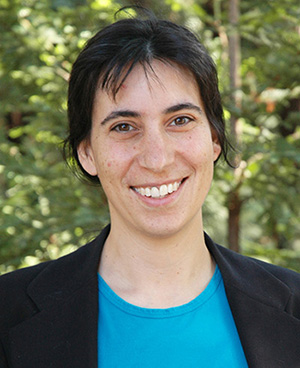The Royal Astronomical Society (RAS) is honoring two seismologists at UC Santa Cruz for their research contributions in geophysics.
Thorne Lay, distinguished professor of Earth and planetary sciences, was awarded the Gold Medal for Geophysics “in recognition of his outstanding work in seismological analysis, which has had an exceptional impact on our perceptions of the structure and dynamics of the Earth.”
Emily Brodsky, professor of Earth and planetary sciences, was awarded the Price Medal “in recognition of her outstanding multi-disciplinary contributions to earthquake mechanics, frictional behavior, and rock-fluid interactions.”
The Gold Medal is the RAS’s highest honor and is often awarded as recognition of a lifetime's work. Lay’s achievements began with his Ph.D. studies of the structure of the deep mantle, which revealed a discontinuity a few hundred kilometers above the core-mantle boundary, implying great structural complexity with profound geodynamic consequences. This pioneering work has been the cornerstone for a diverse creative range of interdisciplinary studies in which he has been a leader, from mineral physics to the fate of subducted slabs and the potential genesis of mantle plumes.
Lay’s research has also provided new insights into the rupture processes of the world’s most devastating earthquakes and the generation of tsunamis. He has published hundreds of papers, inspiring generations of graduate students, post-docs, and researchers all over the world. As a leader of the seismological community, he was critical to the success of the Incorporated Research Institutions for Seismology (IRIS), which archives and distributes the world’s earthquake data. He was elected chair of IRIS’s Board of Directors, has served on panels on Comprehensive Nuclear Test Ban Treaty Research, and was president of the International Association of Seismology and Physics of the Earth’s Interior (IASPEI).
The Price Medal is awarded for single investigations or a series of closely linked investigations of outstanding merit into the formation and composition of the Earth or planets. Brodsky is an internationally acknowledged leader in quantifying processes involved in generating and propagating earthquake ruptures. Her primary recent research targets have included observational approaches to measuring stress on faults, analysis of human-induced earthquakes, experimental work on granular flows at high slip rates, and analysis of aftershock distributions relative to fault ruptures and volcanic processes.
Using novel combinations of field measurements, laboratory experiments, observational seismology, and theoretical modeling, Brodsky’s research often provides comprehensive insights into the problems she is tackling. To test models for fault friction at the field scale, she argued that the ruptured fault should be drilled as soon as possible after an earthquake. The JFAST rapid response drilling into the seafloor disrupted by the magnitude 9 Tohoku earthquake provided the required data. Her work showed that dynamic weakening in already weak clay material on the plate boundary occurred for the Tohoku rupture. Using down-hole thermal observatories, she has also detected fluid pressure redistributions in the damage zone around the main boundary faults. In announcing the Price Medal, the RAS noted that the novelty of her approaches and the importance of her work sets Brodsky apart.
The RAS announced the 2021 awards at the Ordinary Meeting of the Society held on Friday, January 8. The winners will be invited to collect their awards at the RAS National Astronomy Meeting in July.
“I’m delighted that we can recognize the wealth of talent in astronomy and geophysics through our prestigious awards and medals,” said RAS President Professor Emma Bunce. “In the midst of a challenging time, we should not lose sight of the achievements of the stars of our science community, inspiring us by answering the deep questions about the Earth beneath our feet and the Universe around us. My congratulations to all the winners!”




